|
So, here it was. The big day. If you ask any runner they’ll tell you that they never feel as ready as they would like on race day. Common themes are “didn’t train enough”, didn’t rest enough”, “didn’t sleep well the night before”... Well, I’m pretty sure we trained enough, even if we’d not done much before we left then the 10 day hike up to base camp would have sorted that out. Rest though, hmmm… our rest day had turned into an epic hike out of Everest Base Camp through fresh snow with the sound of avalanches thundering all around that exhausted us all and left us with shredded nerves about the day ahead. Sleep had been a struggle for everyone; altitude has a funny way of making you feel tired and sleepy all day but then restless and agitated at night. When even turning over in your sleep leaves you out of breath then it’s easy to wake up every few hours or so in a panic because you feel like you can’t breathe. So, prepared? Maybe not. But excited? Hell yeah! Race day dawned bright and sunny with clear blue skies, snow was sparkling all around and there were jaw-dropping views in all directions. As we lined up at the start Sofia tapped me on the shoulder and said “look behind you”, it was the last view we would have of Everest and she was looking spectacular. The start of the race was somewhat more restrained than usual; there was no sprinting off into the distance on the starter’s pistol due to knee-deep snow. Instead we all trudged off in an orderly line, stumbling over buried rocks and slipping on icy patches. During the hike up to base camp we had already covered much of the race route and were pretty confident that we could nail the first half in decent time before the terrain got tough during the second half. We were glad that the easier sections were early on because the high altitude would slow us down, so we figured that we’d take the first 20km or so at a gentle trot and then have some energy left to attack the steep climbs of the second half. That, of course, was before the snow scuppered our notion of “easy terrain”; there was no gentle trotting to be had, it was mincing and stumbling pretty much all of the way. I fell in big puddle of melting yak poo, which hadn’t been part of my race plan at all. Anyhow, once we had cleared the chorltons that overlook Dingboche the snow disappeared and we managed our first proper stretch of the legs - it felt great, freewheeling down a slightly twisting flowy track with the town below us getting rapidly nearer. There is a loop at Dingboche which we had recce’d on the way; up there, downhill back. It didn’t seem so bad, so we weren’t worried just keen to get it out of the way and on to the next bit. However, the loop had been extended due to the revised race route and somehow it seemed to have got a whole lot steeper as well. It was only 10km but it felt like a marathon in itself; a long relentless uphill marathon with an eternally distant finish line. Everyone had been really well up to this point; a few of us had suffered mild altitude sickness, others had a dodgy stomach but on the whole we’d all been on good form. Which is why it came out of the blue when one of our hiking group ran up to Helen and I to say that Andrea wasn’t well and needed medical help. We were sure he must have been mistaken but when we caught up to Andrea it was clear she was in a bad way; she was doubled over with severe stomach cramps, had fainted and had been throwing up. Although obviously in a lot of pain she carried on to the food station at Dingboche where she tried to force down something for her stomach to work on. We asked for a doctor but there wasn’t one and nobody was very helpful about where we might find one or what we should do if Andrea couldn’t continue. That apparently was out of the question though as Andrea declared through gritted teeth that she would “finish this f@$#ing race if I have to crawl it”. It was quite worrying though, knowing that we were essentially on our own - the provision for medical help seemed to be quite vague and no one that we asked really knew what was going on. So we all carried on at our own pace; the next milestone to hit was Tengboche, if we got there before the cut-off time then we could carry on to the end. In our minds this made Tengboche nearly the end, if we could make it here we were almost home. Just a bit of a climb to get there and then we’re nearly done. Yeah, right… I have no idea how what was a gentle descent through a rhododendron forest could turn into such a hideously relentless climb when going the other way. None of us remembered it being so steep or so very long; it was a head’s down and keep marching job. The forest seemed quite beautiful when we hiked down through it, if you asked me what it looked like on the way up I would have no idea - I just saw the few metres of ground in front of my feet and the neverending steps to the top. Finally we saw the monastery ahead of us and the ground levelled out, we had made it to the checkpoint in time and the young lad who was counting everyone told us merrily that we were 26th to last. I don’t know if this was intended to lift our spirits or not but he was laughing a lot when he said it. Descents are my least favourite part of any run but I was almost looking forward to the downhill bit, just to give my calves a break. It was always going to be my slowest part of the race and this is where Helen, Sam and I parted ways; they skipped off down the rocky track while I stumbled and lurched my way down, using my poles as stabilisers to stop me from plunging off the side of the trail - which I have form for doing. I finally made it in one piece before attacking the last big climb; the evil part of this race is that it takes you so far down just to come back up again. The climb back up was brutal but beautiful; swinging rope bridges across gorges, bright pink rhododendrons peeking through lush green foliage, mist rising like steam from the river; it had been raining earlier in the day but now the clouds were clearing and mountain peaks were starting to show through. I caught Sam up about halfway up the climb, she was tired but in good spirits; she was such a welcome sight as I was starting to feel down about being so far behind and was doing my usual trick of doubting myself and talking myself out of it. Sam is always insanely positive when running though, might be a sign of madness but it’s good to be around. The positive vibes rubbed off and when Sam set off at a faster pace I decided not to join her; rather than running my own race I had been stressing out too much about keeping up with other people. This was a once in a lifetime thing and so I decided to take it all in rather than march along with my head down and my mind full of doubts. So, I took some photos, said hello to some local people, looked around me and tried to store the sights in my memory to look back on. Also, my knees were killing me from the descent so I didn’t have a lot of choice about not speeding up! Coming over the finish line was a special moment; I was delighted to see that all the Neverest Girls were still there with our groupies, Morgan and Karl, as well as lots of the people who we had shared the hike up with. Andrea had battled on and finished the race, despite her stomach giving her problems all the way round. Everyone was so happy to have completed and enormously proud to be wearing the amazing shiny black and red tracksuits that we were presented with. Local children were jumping up at us to grab the national flags that we picked up just before the finish line and there were plenty of organisers, volunteers and locals milling around looking proud to be part of the excitement. The post-race chatter revealed a few victories for our crew; Steph had done amazingly well and was the 1st British woman to cross the finish line! Karl, one of our loyal groupies (and Andrea’s partner) had entered the half-marathon only a few days earlier on a whim, never having entered a race before or ran any further than 10km. However, lack of oxygen obviously suits him as he won it! Not only that but he got to shake hands with an assortment of dignitaries and do a traditional Nepali dance with some nice ladies. Sam and I trudged off to our hotel, weary but happy and looking forward to a hot shower and a good sleep. It seems our day wasn’t over quite yet though as we took a wrong turn to the hotel and then had to climb about a million steps to get back up to it - just what we needed!
The next day was our first true rest day - no hikes, no recces - just lounging about in Namche, eating cakes and buying souvenirs. Two of our hiking group had decided to split the race in two and stay overnight in a lodge halfway, so we headed down to the finish line to cheer them in. John and Richard, two Australians, finished together with proud beaming smiles and tales to tell of drinking rum with sherpas and spotting rare musk deer in the forests! I don’t know whether it was relief at having finished in one piece but there was definitely a different feel to the group after the marathon. Everyone was chatting and opening up a bit more, those that had seemed reserved before the race were much more sociable. A few of us spent our last night in Namche Bazaar in a local bar with some of the trekking guides, they had lightened up a lot too now that the pressure of getting everyone through race day was off. Andrea was still not well and spent the day in her room being force-fed Hobnobs; she must have felt really awful if Hobnobs had to be forced upon her. It was worrying because no one really knew the cause of the problem, but one of our hiking group was a nurse from New Zealand and she kept an eye on her alongside our Nepalese doctor. Eventually it was decided that dehydration must be behind it all and a saline drip was administered; it seemed to do the trick as Andrea was up on her feet again the next day and ready to hike back down with us, she wasn’t her usual sprightly self but she was definitely on the mend - hurrah! Now there was just the small matter of getting back to Kathmandu and getting those pedicures we’d promised ourselves. What had taken us 10 days to hike up somehow only took us 3 days, including marathon day, to hike back down again. Weary legs aside, it felt amazingly easy as we descended back through the Khumbu Valley. The lower we went, the more oxygen-rich the air became - and we weren’t having to drink 4 litres of water per day anymore, so we probably saved a lot of time on toilet breaks. Hiking back down felt strange as we revisited all the places we had passed through on the way up; although we only spent one night in each place they all felt very familiar but also as if it had been much longer ago since we were last there - I guess a lot had happened in that short time! We spent our last night in Lukla in the same lodge that we set off from; it had seemed so basic when we started but now felt like luxury - the toilets that had horrified us when we arrived were now looking quite posh. Post-race drinks had not yet been had, so we headed off to find beer. We not only found beer but ended up dancing like loons in our shiny tracksuits in some dodgy underground bar, it felt more like 3am than 3pm and it was funny to stumble out of there mid-afternoon and head back for dinner. We had a special farewell meal with our guides and sherpas and thanked them for their amazing efforts; they had looked after us so well every step of the way, especially during the scary experience up at Base Camp. They did everything with great big smiles on their faces and were always such good company, seeing the funny side of everything despite having hard lives. It was sad to say goodbye to them, they had been such a big part of our adventure, but we knew that they were so happy to be back in Lukla with their families. Now we just had the small matter of flying back to Kathmandu and readjusting to crazy city life...
0 Comments
On day 4 we took a different, higher route out of Namche, straight up 500m then down to the village of Khumjung at 3800m, the same height as the Aiguille du Midi where we spent time acclimatising before the trip. The views across to Everest and Ama Dablam were stunning, we stopped for a spot of golf on a lovely grassy plain and took many happy photos of us all. In Khumjung we visited the school that Sir Edward Hilary established in 1961 and a monastery which houses a real yeti scalp! It looked more like part of an old fur coat, but it’s amazing how many of the Sherpas and other locals truly believe in the existence of yetis. I have to admit that I did get a little spooked by strange noises when using the toilet in the middle of the night. The stars were clearer here than anything I’d ever experienced, if you were brave enough to venture out of the tent during the night. Day 5 took us back down to the river and then up again. The route often did that, so despite little altitude gain overall that day we still went down and up 600m which got the heart and lungs pumping. We visited the monastery at Tengboche which marked the one cut-off point at the top of a climb during the race. There was a lot of chanting, horn-blowing and tea-drinking by the monks, but it was the smell of our collective cheesy feet that drove us out of there pretty quickly! We were amused to hear that the monks ski here in the winter, on homemade skis, in their robes. The descent through a rhododendron forest was beautiful and we made camp in Deboche in the grounds of a lodge alongside the other camping group. We were excited to find a toilet with a seat and the lodge was comfy and warm for mealtimes. Everybody seemed to be on good form. The stars were gorgeous again overnight and we awoke to wonderful views of a misty Ama Dablam with huge shadows being cast by the rising sun. We met the first of our regular dog companions (Buster) and I shared my boiled egg with him. The dogs all looked like they needed a bath, but were very friendly and didn’t appear to belong to anybody, popping up randomly en route. Day 6 took us over the landmark 4000m and up to 4300m in Dingboche, but it was a nice gradual ascent. This took us above the tree line, leaving the landscape barren and we also sighted our first big, hairy yaks, who can only survive about 3000m. Some of the girls were suffering from colds and dodgy stomachs today, but still no major altitude sickness issues. However it certainly felt colder, the air thinner and the yak dung burnt in the lodges filled the air with an acrid smoke. Overnight we had thunder, rain and snow and those that had diligently washed their undies the night before found them frozen solid on the lines when they woke. The morning was stunning and we could now see that we were surrounded by huge, snowy mountains which were shrouded in mist when we’d arrived. Day 7 was a rest day at Dingboche, which again meant no rest but a trek and run around a loop that we would have to do on race day. It was good to have a run again, although the terrain underfoot was not too enjoyable and the thought of having to run up and downhill here mid-race wasn’t appealing. We had the afternoon free and trekked up to a chorten, towards another part of the race route, listening to strict instructions from Ricky not to explore the other side of the valley. I’m not sure if there were yetis living over there, but there were a few signs up around town showing pictures of trekkers that had recently gone missing… There was a camera crew following a Brazilian team doing the race and a few of us did a brief interview for them. Our doctor took our blood pressures and gave his usual advice of “drink more water” if anything seemed abnormal. From here onwards, the weather started to get progressively worse. Scorching hot sun was interspersed with a cold, driving wind that seemed to come out of nowhere and we started wearing more layers for trekking and at night. The days often began clear and bright, but a cold mist and wind rolled in during the afternoon and evenings. Day 8 was exactly like this and we left Dingboche to gain another 600m in altitude. The uphill was slow and gentle, over sparse, rocky plains, along the side of a glacial valley. Buster the dog had been joined by his friend Shakira and they merrily trotted along beside us. We dropped down to the river and stopped for lunch, then climbed on up the valley. We passed through an area covered with memorials to those that had lost their lives on Everest, strewn with prayer flags. It was emotional reading the memorials and we took time to walk around them. We realised we were at the same height as Mont Blanc which was pretty exciting for us Chamonix-based folk. Lobuche at 4900m came into view soon after and it was clear that we were getting into the high mountains now, with only a couple of lodges in the village. Most of us started feeling the affects of altitude today. It feels like you are slightly drunk and hungover at the same time and you have to do everything really slowly to avoid getting out of breath. Your brain struggles and it’s hard to think straight due to the lack of oxygen. At 5000m there is 45% less oxygen than at sea level. Lots of people had started coughing and taking mild painkillers or anti-altitude sickness medication to try and fend it off, but personally I preferred to drink as much water as possible and hope that my head sorted itself out. Luckily for me, that worked. Day 9 was the toughest day yet by a long way. I awoke at 2am to heavy snow and then at 5.30 the Sherpas started shaking our tents to dislodge the 15cm of fresh snow. Many of our team had not brought footwear suitable for such weather, which was unusual for this time of year. We trekked for 3 hours in a snowstorm, through deep snow, up to Gorek Shep at 5190m and it was exhausting. We arrived at the lodge there cold and wet, with many of our team really suffering from the altitude. There was nowhere to dry our wet clothes until they lit a small stove in the evening and the toilets were beyond disgusting. However for us tomorrow was a big day, the trek to Everest Base Camp, so we went to our tents with smiles on our faces and slept well. On day 10 the snowstorm was still raging, so the trek was postponed until after lunch. We got kitted up in our cold and wet weather gear, looking like we were about to trek to the Antarctic, not to the start line of a race. The route to EBC is a single file track along an undulating ridge with dangerous drops and a traverse across a glacier through an avalanche/rock fall field. When we got to this field a few boulders fell, so we were very lucky to spot them and not to have been hit. As we stood there in deep snow in our wet running trainers, having slipped and fallen several times each, we wondered just how we were going to ‘run’ this in two days time! Upon arrival at base camp (5390m) we were shown to our tents and told to be careful where we stepped. We were essentially camping on a glacier and there were holes and crevasses everywhere. Tents were pitched on slopes and hilltops and looked like you would just roll out of them! We got into our tent to find everything was very wet and cold, due to the melting snow soaking through the bottom. Even getting to the dinner tent or toilet was an enormous effort. We were told that the storm was getting worse and that we should wake up every hour to knock the snow off our tents, a) to stop us suffocating, and b) to stop the tent from collapsing. That was not going to make for a good nights sleep! After a very scary night with a few of us having panic attacks from lack of oxygen, we were dug out of our tents by the Sherpas and trudged over to breakfast in snow up to our thighs. This alone was so tiring at this height. As we ate our breakfast we could hear avalanches rumbling all around the valley. Consequently, the race organisers decided that, due to the conditions, the race would not be able to start from EBC this year. After more snow, the sun was due to come out that afternoon, causing the fresh snow to melt and making the avalanche risk on the trail extremely high. We had to evacuate right now! We returned to our tents to pack, having been told that our kit bags may not make it back to Gorek Shep before the race, thus deciding to carry or wear as much as possible. Knowing the avalanche risk, the state of the path we would have to walk across, the fact that we had inadequate kit, no ropes or crampons and that no helicopter could get to us if something was to happen, we were terrified. I can honestly say that I have never been so scared in all my life, shortly before and during the first hour of that trek. Nobody had given any instructions, Ali & Sam got separated from the rest of the group, people were struggling to carry their own kit, the snow was still pelting down, we could see avalanche debris across our walking path and people were stopping to take photos in the middle of it all! After 2 ½ hours we were utterly exhausted, inhaling chocolate bars to keep going. Due to the stress, panic and confusion, we nearly all forgot to put sun cream on. Despite the whole episode being played out in a blizzard, with zero sun, several of us managed to get the worst sunburn on our faces that we have ever experienced. We arrived back in Gorek Shep, happy to be alive but with painful, swollen, burnt faces. And all of this the day before the race on what was supposed to be a rest day. At this point, we started to feel angry as it became apparent that safety was not first on the race organisers’ agenda. Surely they had known about the weather forecast before we even left for EBC the day before? Why had they risked taking us all up there? Were they more bothered about trying to conserve the start line and title of the ‘highest’ marathon in the world than our safety? If these conditions happened before a race in Chamonix, we knew that the race would be cancelled or at least re-routed.
We spent the afternoon discussing as a group what was best to do as we were concerned that even the new race route was dangerous and avalanche-prone. Whatever we did, we’d have to get down there on foot at some point, but should we even race? Travel today was impossible as we were informed there had been an avalanche on the route, i.e. the route we were due to travel tomorrow. We sent messages to people we knew that had trekked the area, asking their advice. In the end we decided to run in groups of 3 until we got through the high risk area. At this point we just wanted to get off this mountain and that was the only way we were going to do it! We were given beds in the lodge for the night, our amazing porters and Sherpas worked themselves to exhaustion to bring all of our kit back, many of them doing two trips from EBC and we went to bed scared for a second night, worried about what the next day held for us. There is no way we would consider hiking or running in such ridiculous conditions in Chamonix. This was supposed to be fun and a challenge, but we were not prepared for such dangerous circumstances. What on earth were we doing here? Sam & Helen x |
Archives
October 2015
Categories |

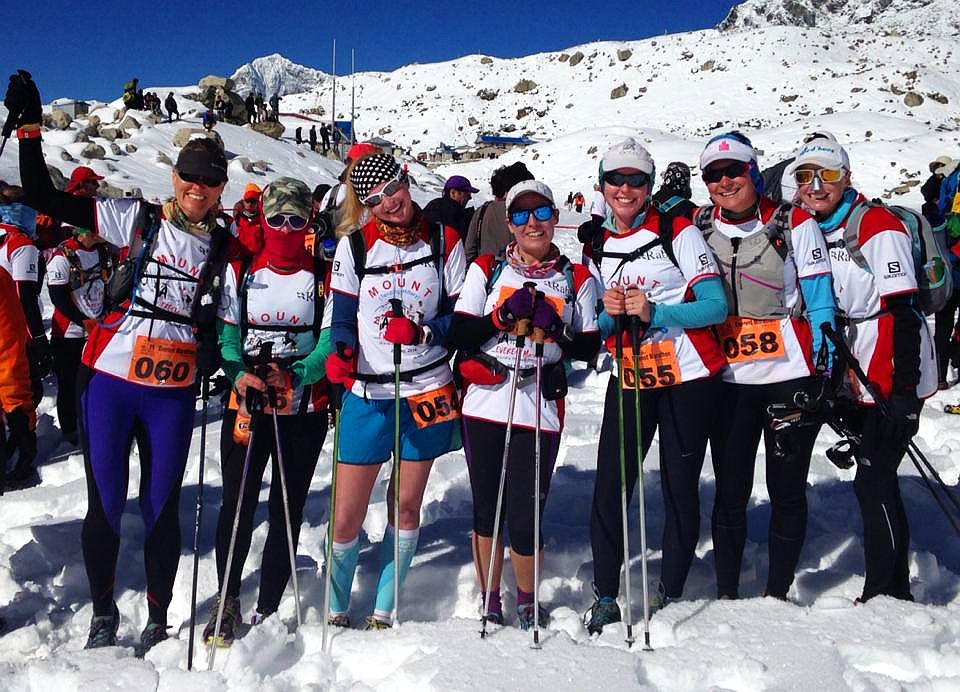



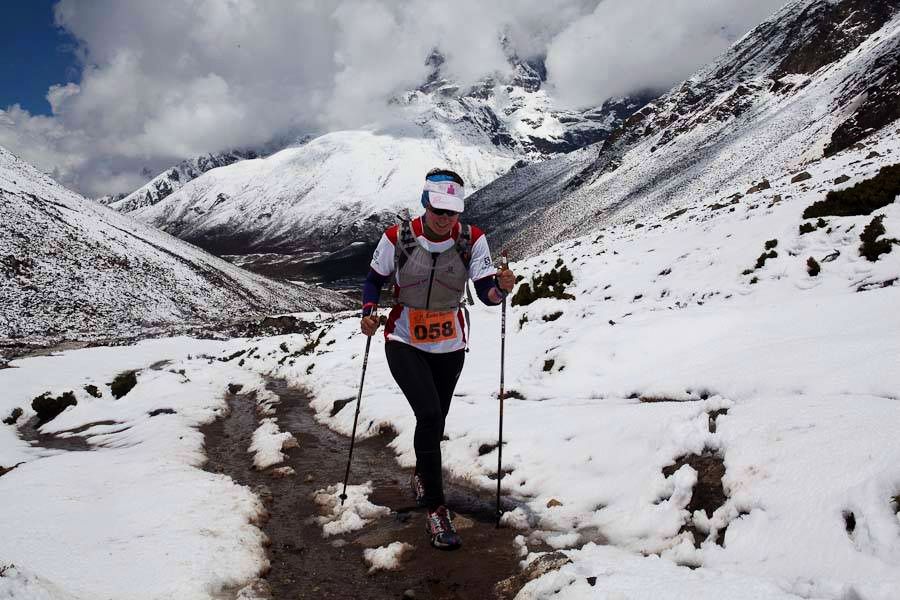

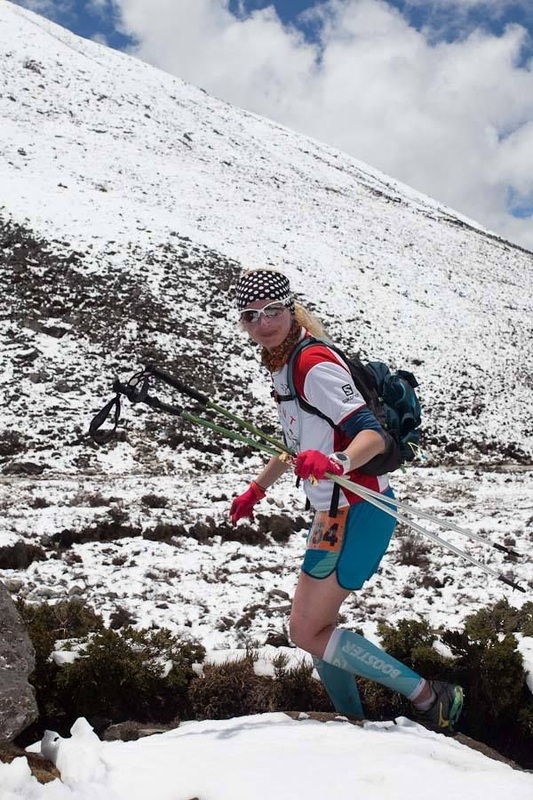

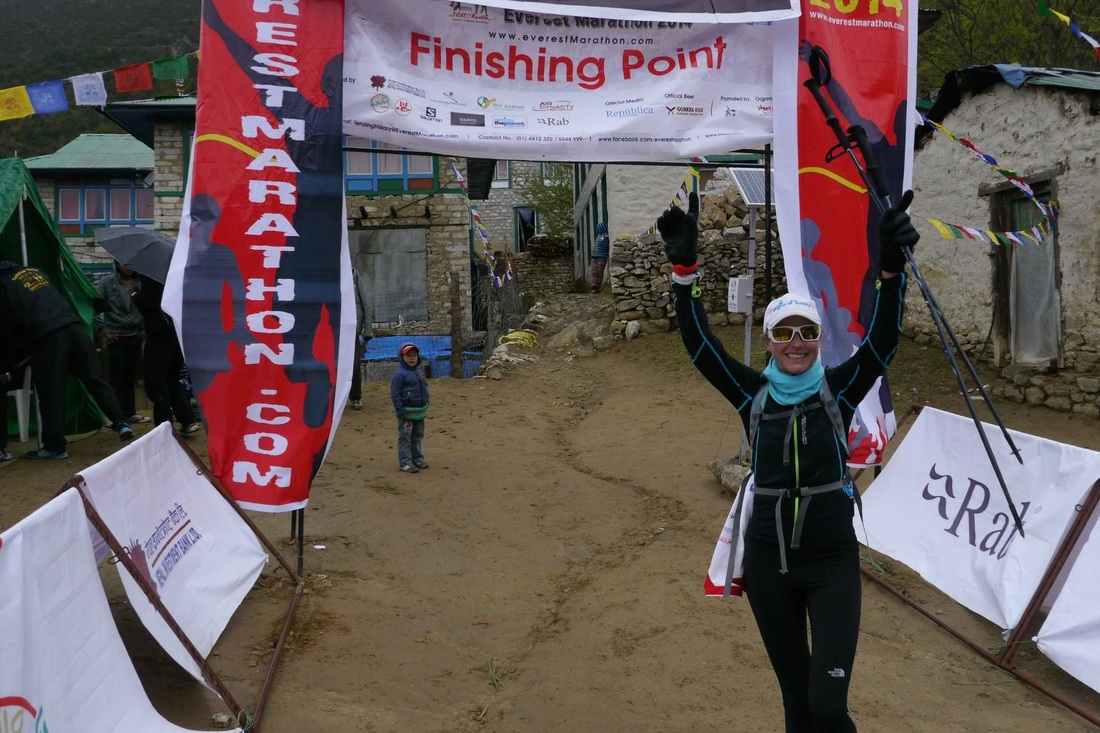



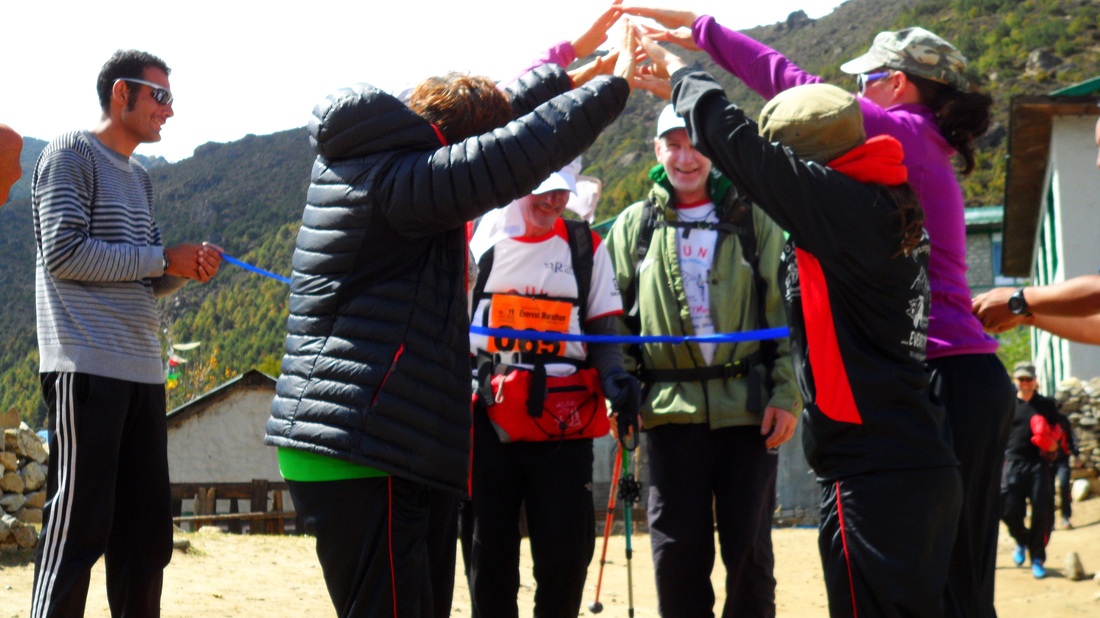
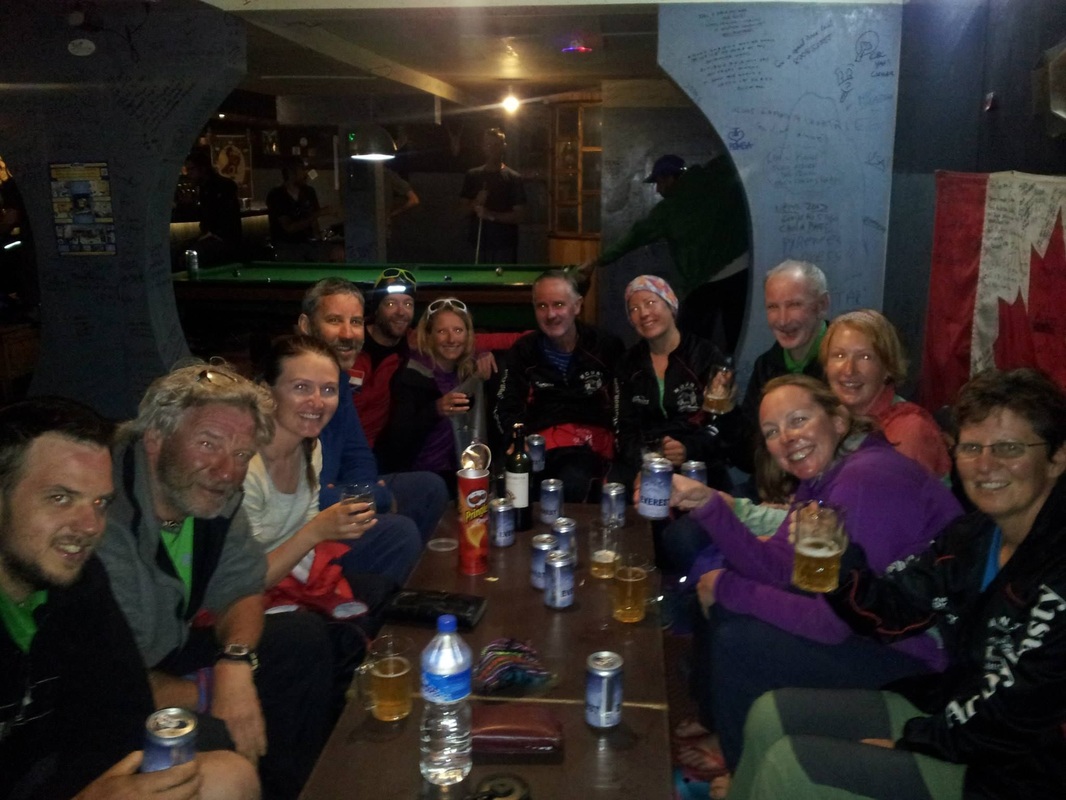




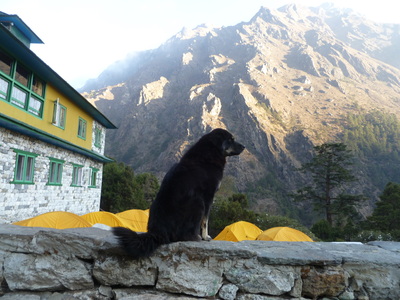




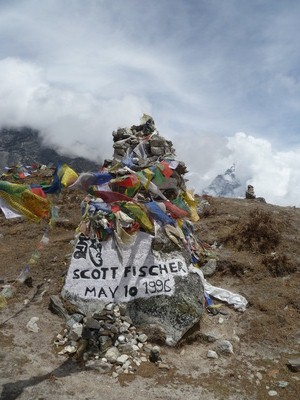
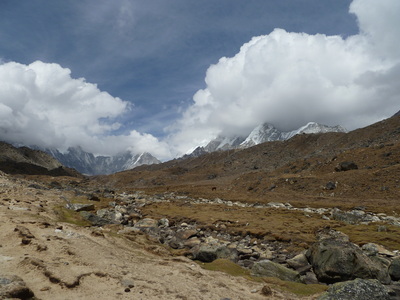


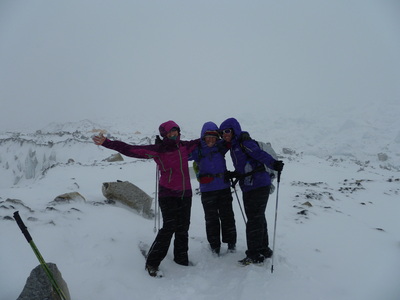

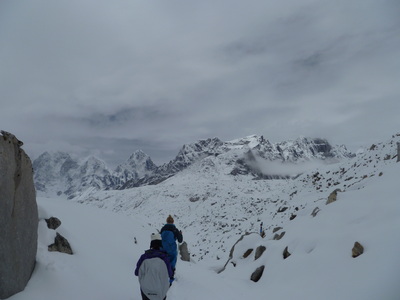
 RSS Feed
RSS Feed
